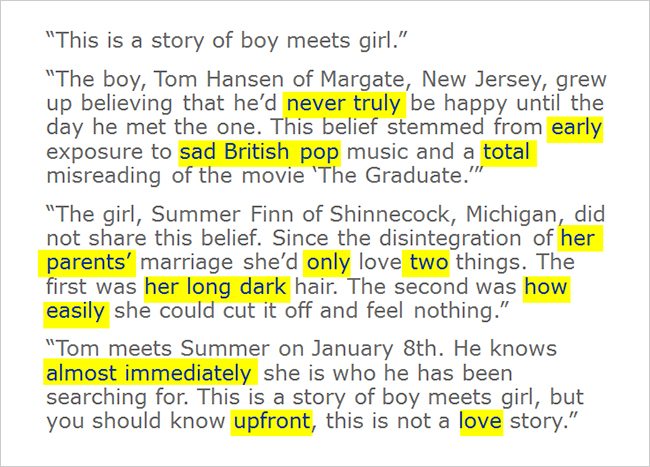The title says it all, “Storytelling and Your Quest for Business Success.”
It’s rare for a magazine to examine the power of storytelling in business. This particular article comes compliments of the trade book One +, which caters to more than 30,000 meeting planners.
Before you scoff, consider the plight of meeting planners in matchmaking an organization with a venue. No doubt, if you’ve seen one convention center, you’ve seen them all (only the dimensions change).
Enter storytelling as a means to grab the audience by the scruff of the neck.
Writer Jason Hensel bravely kicks off the piece with a cliche that works as a stage setter:
One upon a time. Need I go further? You know you’ve entered a story. Perhaps you prefer something a little more straightforward: “Call me Ishmael,” “I am an invisible man” or “Mother died today.” The simple act of telling a story demands attention whether it starts with the fantastical or the concrete. It’s the difference between academic and business-speak and barroom banter.
He had me at “Ishmael.”
Hensel spoke with Pat Lencioni, author of several popular business books including “Death by Meeting.” Hard to argue with the writer behind “a cure for the most painful yet underestimated problem of modern business: bad meetings,” who shares:
I think that people today are more distracted than ever. People are looking for something that captures their attention and provides an enjoyable experience.
Thank you.
Splattering a screen with a mind-numbing array of charts and graphs is not an enjoyable experience.
I was also pleased that my perspective on the importance of context in storytelling found its way into the narrative:
“Take the movie Rudy. If you jump to the end of the movie and see Rudy finally going into the game to play for Notre Dame, this has zero meaning. Instead, one needs to understand he originally got rejected, parlayed a [junior college] stint into admissions, walked on to the team as an undersized player, etc.
This is a big part of storytelling and especially relevant in markets of complexity like technology. Too often companies want to jump right to the innovation instead of providing context of how this was accomplished before. It’s the delta between what was and what is that delivers the drama.
And I like how Hensel puts a bow on the piece in closing:
The stories may all begin and end differently, but they all have the same core—we are one. The human story is the only story there is, and when you understand that, you’ll be able to move freely in any world, from barroom to boardroom.







